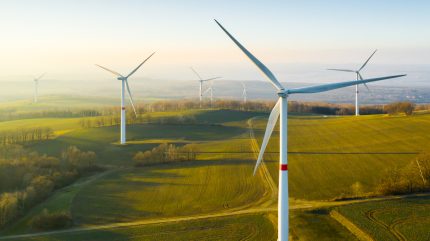
Europe’s efforts to expand wind power capacity are falling short of the levels required to meet the European Union’s 2030 climate and energy targets, despite wind power providing 20% of the continent’s electricity in 2024, according to industry group WindEurope.
In 2024 Europe added 15GW of new wind energy capacity: 13GW from onshore and 2.3GW from offshore wind.
To achieve its 2030 climate objectives, however, the EU should be constructing 30GW annually. The bloc aims for wind power to represent 34% of its electricity consumption by 2030 and more than 50% by 2050.
WindEurope CEO Giles Dickson stated: “Europe is not building enough new wind farms. [This is] for three main reasons: most governments are not applying the good EU permitting rules – they’ve got to follow Germany’s example here. New grid connections are delayed, and Europe is not electrifying its economy quickly enough.
“The EU must urgently tackle all three problems. More wind means cheaper power which means increased competitiveness.”
In 2024, Europe funded an estimated 19GW of new wind energy, a slight decrease from the 21GW financed in 2023. Onshore wind investments remained strong at €24bn ($24.7bn).

US Tariffs are shifting - will you react or anticipate?
Don’t let policy changes catch you off guard. Stay proactive with real-time data and expert analysis.
By GlobalDataOffshore wind investments saw a drop compared to the previous year, making it difficult for companies to commit to new projects.
The offshore wind sector globally has faced challenges including infrastructure and grid connection issues, permitting delays and rising component costs.
Access to the electricity grid is one of the primary obstacles to the rollout of wind energy. Urgent measures are required to alleviate grid capacity issues. At present, more than 500GW of potential wind energy capacity is awaiting evaluation of their grid connection applications.
Europe is also lagging in the electrification of its economy. Currently, electricity accounts for 23% of total energy consumption in the EU, a figure that must rise to 61% by 2050. Progress in electrification is stagnating, particularly in sectors such as transport, heating and industry.
Corporate interest in wind energy remains high, with 50% of all new power purchase agreements (PPAs) for electricity in Europe in 2024 being for wind power. Out of 12GW of renewable PPAs, dedicated wind PPAs accounted for 4GW.



